How to Use TikTok in Your Marketing
In this post, we’ll break down what TikTok is, who’s using it, and what you, as a marketer, need to know.

With organic reach dwindling across all social channels, especially Instagram, a common question is how to gain social media followers.
Unfortunately, there is no silver bullet. Sure, you could pay for followers to give the appearance of success, but that may result in the suspension or deletion of your account. Additionally, users will most likely suspect something is off and think less of you and your content. Not to mention that paying for followers or likes won't improve the metrics that truly matter to your success, such as likes, comments, shares, and saves.
The best way to build an audience on social is to set aside time to engage with people on those channels genuinely and authentically.
Here are a few ways to work community engagement into your content plan:
Don't just post something and move on. Spend time responding to comments and engaging with your audience. Turn your posts into conversation starters and try to build real relationships with people who take the time to engage with your content.
Instagram’s algorithm provides the most reward for engagement that occurs within the first hour of a new post. So, while it does seem time-consuming, engaging with comments during this first hour pays off in multiple ways for your brand.
First by extending the reach of the post and secondly by providing an opportunity to build a relationship, and demonstrate the brand voice and tone, with your audience.
Even quick comments, like an emoji as a response, should help posts perform better.
Your account and content should be focused, however it shouldn’t entirely be focused on sales.
If your branded social accounts are all about selling your products and services, then it's not going to be fun or valuable for your audience.
Instead, expand your focus to include the broader category, environment, or topic that your brand exists in. Doing so will enhance your relevance and value among your target audience and allow you to mix in sales messages here and there that will not seem pushy or disconnected from what your audience expects.
It seems counterintuitive, but promoting someone else helps in a few ways. It adds variety to your feed and shows that you're a generous member of that social channel’s community.
For example, let’s say you’re a brand focused on a DIY audience like Gorilla Glue. If you find and share someone’s post showing a project that your tool would be perfect for, or better yet, showing or mentioning your tools, it would make sense to share that with a caption that celebrates the project/outcome/or excellent taste in tools.
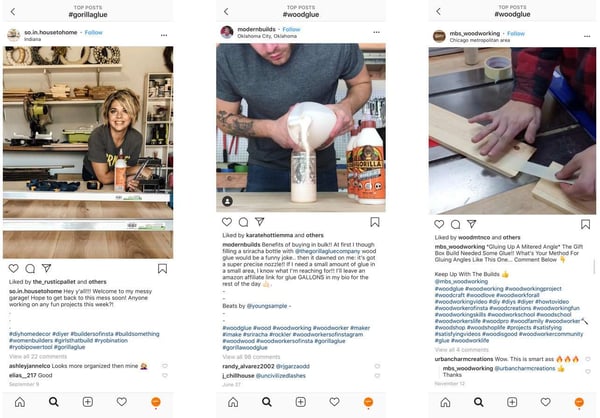
Additionally, the owner of the content you share is likely to be grateful and share or mention you to their audience as well.
At the very least, they may comment on your share which is not only engagement (yay!) but sends a signal to their followers that you may be a brand they should pay attention to.
Many people follow brands for customer service reasons or to gain knowledge about a topic or product. So explore whether recurring Q&A sessions may work for you.
You can promote these sessions within other channels to drive your existing audience to social. Plus, the conversations from these sessions will fuel additional content creation across all of your marketing channels.
Now, you may be thinking: “I can hardly get anyone to like or comment on my posts, how am I supposed to get them to ask questions?”
Thankfully, it doesn’t matter if they’re asking you the questions yet. It only matters if you have answers.
As an example, consider Former NFL kicker now Podcaster, Pat McAfee. He has a segment titled “Questions I Seent On Other Shows,” where – you guessed it – he provides his take on questions that he’s seen on other sports shows.
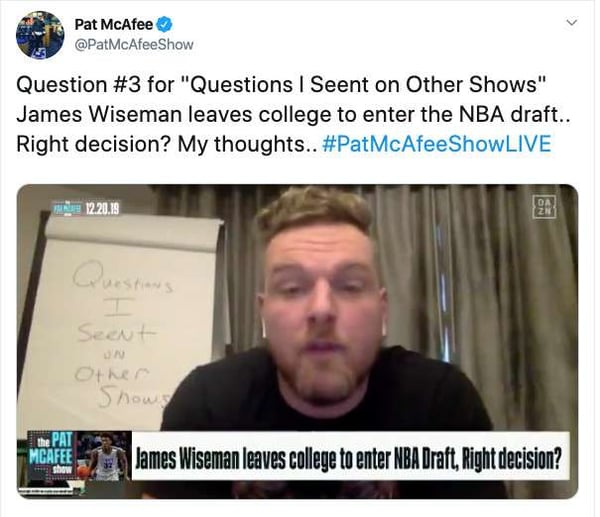
There’s no reason you couldn’t do something similar since questions are easy to find online through resources like Quora, Reddit, or Answer The Public, and your audience is more interested in the answer than who posed the question anyway.
Hashtags are a blessing and a curse. On the one hand, they can be an eyesore, especially if you use the full 30 allowed on Instagram (which, to be fair, we often do when trying to grow new accounts organically).
But the fact is, hashtags are the best way to expand your reach, grow your audience, and boost your engagement.
If you use a lot of hashtags, you can always try to bury them towards the end of your post which would hide them beneath the “more” link.
Regardless, whether you use a lot of hashtags or only a few, it’s important to select the right ones.
Hashtags are similar to keywords for SEO in the sense that you want to select terms that relevant to your content, with high search volume and low competition. The following example relates to Instagram, but the concept is similar regarding Twitter and TikTok as well.
For example, let’s say that you are a tool manufacturer with a small following and you are trying to attract a DIY home improvement audience. The first hashtag that may come to mind is #HomeImprovement, however, if you search that tag you’ll see that there are 2.2 million posts using that same hashtag.
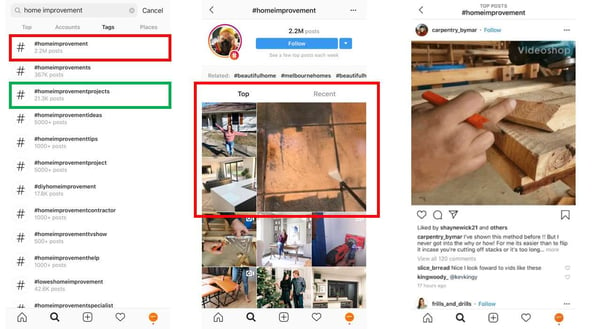
Click into the hashtag and you’ll see the top posts and viewing a few will show you what content is performing well and what type of engagement your post will need to get in order to break through using that hashtag.
In one post, we see 120 comments and lots of likes. Even though Instagram doesn’t let you see the number of views anymore, a quick scroll will give you a sense of what you’d need to compete.
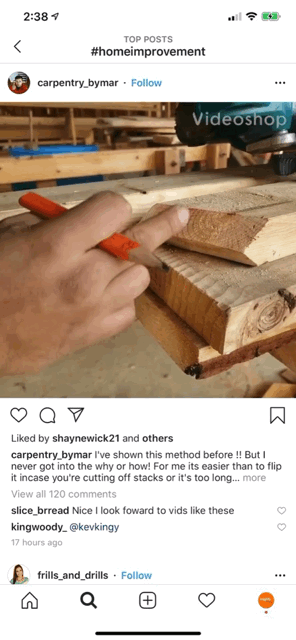
Now, this doesn’t mean that you shouldn’t use this hashtag. However, the goal of using hashtags is so that your post is discovered by someone browsing that hashtag who isn’t already following you. The less competition for the hashtag, the greater the chances your post won’t be buried by more popular creators.
That said, you also don’t want to exclusively use really small hashtags either since that traffic may be too low.
The best strategy is to mix one or two high-competition hashtags with medium-to-low competition hashtags and use an analytics tool like Later or Sprout to gauge hashtag performance and adjust your approach as your following grows.
Sign up for our monthly newsletter to receive updates.
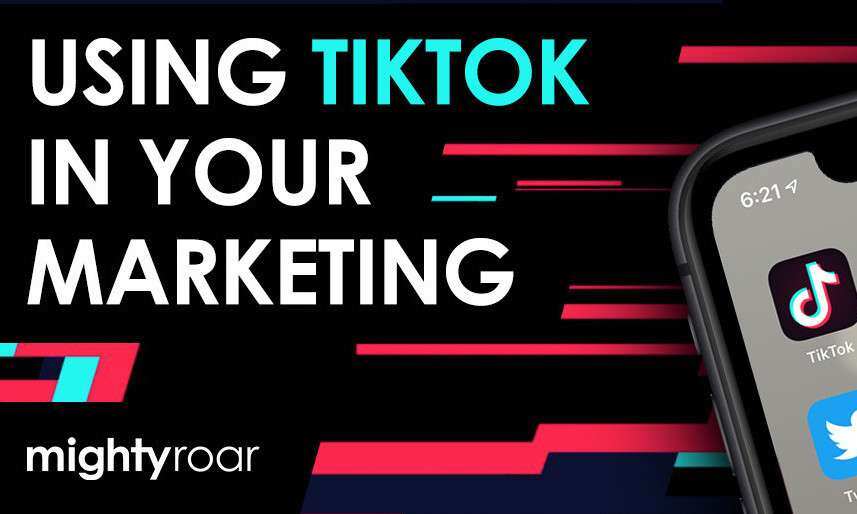
In this post, we’ll break down what TikTok is, who’s using it, and what you, as a marketer, need to know.

Google has made several big updates to how their search algorithm works over the past two years. However, few updates have created as much panic and...

If you ever wonder why your website isn't converting as well as you'd hoped, you're not alone. As a digital marketing agency, we've seen firsthand...